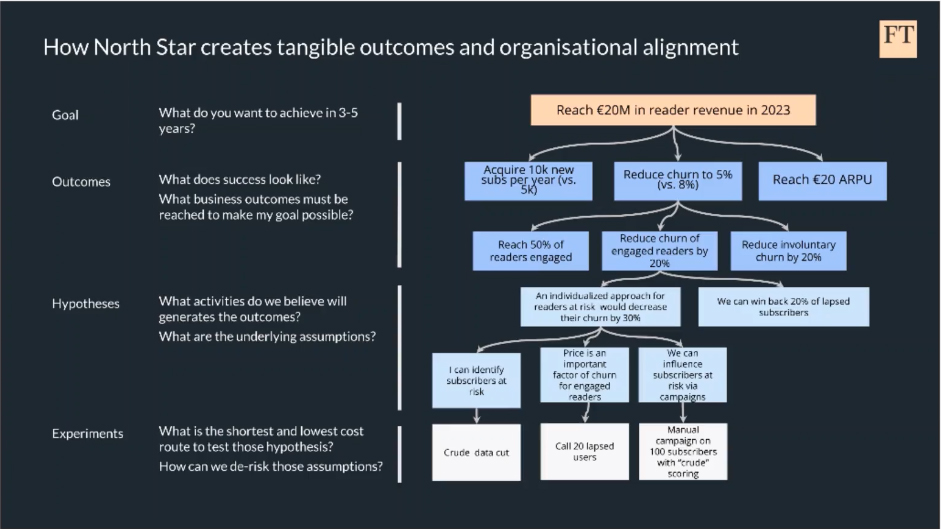
Out of the hardships of the coronavirus pandemic has come a moment to grow loyal audiences.
The Financial Times (FT) was one news organisation that saw the lockdown as an opportunity to switch up its strategy. It opted to relax its paywall and offered audiences free-to-read coronavirus content.
You asked, we answered:
— John Burn-Murdoch (@jburnmurdoch) March 23, 2020
The @FinancialTimes coronavirus death & case trajectory trackers are now 🔥 FREE TO READ 🔥 outside the paywall: https://t.co/JxVd2cG7KI
In this morning’s update, the US has gone above 470 deaths, bringing it just behind where Iran was at the same stage. pic.twitter.com/NBA7FMYlmC
But why would a publisher with an 18-year-old paywall strategy and 1.3m digital subscribers (as of 2019) suddenly change its approach? As Tara Lajumoke, managing director of FT Strategies explained at FT's Future of News event last week, the decision was part of a conscious subscription strategy.
It proved to be the right approach as, during lockdown, FT hit its end of year subscription goals within three months.
While FT's digital transformation is deep and complex, Lajumoke says it can be distilled into three simple steps.

Set an ambitious goal
In 2019, FT's target was hitting 1m subscribers, which it did. During the pandemic, however, its focus shifted on creating value for readers.
"There is a relentless obsession with driving value and habitual use," says Lajumoke.
To capitalise on the anonymous surge of traffic flooding in around lockdown, the publisher relaxed its paywall to get these readers sampling premium content.
The point, she added, is that "you can't change what you can't measure". So create that ambitious target and devise specific metrics which can measure your progress. The FT saw a 97 per cent increase on page views during lockdown.
Page views do only track intent to read, so be open to other metrics like return on investment, frequency of visits or volume of subscribers.
Leverage technology
News organisations with some form of paywall or membership will have access to rich data.
Lajumoke said that you must weigh up the pros and cons of using in-house or licenced tools. For instance, it is easier to 'borrow rather than build', but using your own tools requires expertise many newsrooms will not have.
To look at it simply, FT knows that its digital revenue is greater than its print, and that its reader revenue is greater than advertising. These are signs of moving in a healthy direction. News organisations must be able to zoom in on who their subscribers are.
Empower cross-functional teams
The final touch is to ensure every single team and department are behind a collective mission.
Have a specific problem in mind, be that how to decrease trials cancellations or increase average revenue per user. The shared knowledge of editorial, data, tech, finance and product teams can produce innovative solutions.
"Reader revenue and subscriptions are a multi-faceted problem that requires a multitude of skill and perspectives," Lajumoke explains.
This may come at the cost of reducing projects but it will be more valuable to have fewer projects that are more agile.
She offered the following takeaway formula: create a goal, set main outcomes, propose hypotheses and experiment with those assumptions.

Calling all Telegram users: join our journalism news channel to receive an audio update every Monday morning, and our journalism jobs channel to find out the latest opportunities
Free daily newsletter
If you like our news and feature articles, you can sign up to receive our free daily (Mon-Fri) email newsletter (mobile friendly).
Related articles
- Five key takeaways from the UK select committee on the future of news
- How do news leaders define success in their newsroom?
- From Reuters to The New York Times, Big Oil pays 'most trusted media brands' to push greenwashing
- How the Financial Times is broadening its portfolio
- Newsrewired: How to nail your subscription pitch









